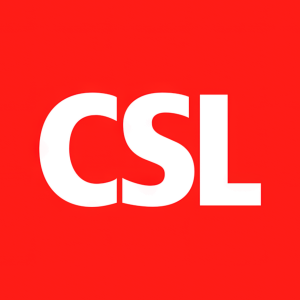Seqirus, a Business of CSL Limited, Announces New Facility Supporting Research & Development of Leading-Edge Influenza Vaccine Technology
Rhea-AI Summary
Seqirus, a unit of CSL Limited (ASX:CSL), announced a $40 million investment in a new 140,000 square foot R&D facility in Waltham, Mass, to enhance its self-amplifying mRNA technology for influenza vaccines. Expected to be operational by mid-2022, the facility will house 300 employees and transition ongoing projects from Cambridge. This investment aligns with Seqirus' goal to improve vaccine effectiveness and reduce dosage requirements. Clinical trials for sa-mRNA vaccines are set to begin this year, furthering CSL's commitment to pandemic preparedness.
Positive
- Investment of $40 million into a new R&D facility in Waltham, MA.
- Facility will expand R&D capabilities and support sa-mRNA vaccine technology.
- New site expected to create 300 jobs and transition ongoing projects.
- Clinical trials for sa-mRNA influenza vaccines to commence in 2022.
Negative
- None.
News Market Reaction 1 Alert
On the day this news was published, CSLLY declined 0.76%, reflecting a mild negative market reaction.
Data tracked by StockTitan Argus on the day of publication.
SUMMIT, N.J., Feb. 7, 2022 /PRNewswire/ -- Seqirus, a global leader in influenza prevention and a business of CSL Limited (ASX:CSL), today announced an investment in a new Research and Development (R&D) facility located in Waltham, Mass. The new facility will support the company's growing R&D portfolio, with a focus on a self-amplifying messenger RNA (sa-mRNA) technology platform, the next generation of mRNA technology. The facility will serve as the company's central R&D hub for current and future vaccine design, and collaborations with stakeholders from across the industry and academia.
"As our R&D investments and capabilities grow significantly, so too has demand for the additional space needed to advance our pipeline and fortify our broad portfolio of differentiated influenza vaccines," said Ethan Settembre, PhD, Vice President, Research at Seqirus. "We're excited to expand our footprint in the Boston area and to build out our R&D capabilities as we look to usher in a new era of excellence in vaccine development."
The custom-built facility consists of approximately 140,000 square feet overall including 54,000 square feet of lab space, with the ability to house about 300 full-time employees. All ongoing R&D programs currently taking place in Cambridge, Mass. will transition to the Waltham facility in the coming months. The new site is expected to be fully operational by mid-2022.
sa-mRNA Program
"The new facility and expanded workforce capacity will allow Seqirus to accelerate our sa-mRNA R&D program in a key location," said Roberta Duncan, Vice President, mRNA Program Lead at Seqirus. "With clinical trials for seasonal and pandemic sa-mRNA influenza vaccine candidates commencing this year, the new facility will guide the advancement of our sa-mRNA platform through to commercialization."
mRNA vaccines help protect against infectious diseases by giving instructions to cells in the body to make a protein, stimulating an immune response and leaving a blueprint to recognize and fight future infection.1 sa-mRNA also instructs the body to replicate the mRNA encoding for the protein, which then amplifies the amount of protein made.2 This could enable the development of vaccines that can be more effective with a smaller dosage and with lower rates of reactogenicity.2 This further supports the inherent value of this technology in both pandemic and seasonal influenza.2 In preclinical research, sa-mRNA technology demonstrated the potential to raise stronger cellular responses against a pathogen and express higher levels of protein using the same dose level as mRNA.2
sa-mRNA technology is an important element in Seqirus' R&D pipeline, in addition to the company's adjuvanted, cell-based influenza vaccine (aQIVc) candidate, which combines Seqirus' proprietary MF59® adjuvant with cell-based influenza technology and is progressing into Phase 3 clinical development this year.3,4,5
With more than 1,700 scientists around the world, CSL is making important R&D investments in leading biotechnology locations including Waltham as well as Melbourne, Australia; Bern, Switzerland; Marburg, Germany; King of Prussia, Pennsylvania; Pasadena, California; Amsterdam, Netherlands - helping create an integrated global organization that can conveniently collaborate with each other and institutions everywhere - offering access to professional development opportunities and enhancing external innovation.
About Seasonal Influenza
Influenza is a common, contagious seasonal respiratory disease that may cause severe illness and life- threatening complications in some people.6 Influenza can lead to clinical symptoms varying from mild to moderate respiratory illness to severe complications, hospitalization and in some cases, death.6 Because transmission of influenza viruses to others may occur one day before symptoms develop and up to 5 to 7 days after becoming sick, the disease can be easily transmitted to others.6 Estimates from the Centers for Disease Control and Prevention (CDC) report that during the 2019/20 influenza season, there were an estimated 405,000 influenza-related hospitalizations in the U.S.7 The CDC recommends annual vaccination for individuals aged 6 months and older, who do not have any contraindications.8 Since it takes about two weeks after vaccination for antibodies to develop in the body that help protect against influenza virus infection, it is recommended that people get vaccinated before influenza begins spreading in their community.8 The CDC recommends that people get vaccinated by the end of October.8
About Pandemic Influenza
Pandemic influenza, is a contagious airborne respiratory disease which is unpredictable in timing and severity.9 The risk of influenza-associated morbidity and mortality is greater with pandemic influenza than with seasonal influenza because there is likely to be little or no pre-existing immunity to the virus in the human population.10 Four influenza pandemics have occurred over the past century, with the 1918 pandemic being the most severe in recent history, estimated to have killed up to 50 million people worldwide.11 According to the World Health Organization (WHO), a novel influenza A virus such as the highly pathogenic avian A(H5N1) strain can cause severe disease and have a high mortality rate.12 If the influenza A(H5N1) virus were to change and become easily transmissible from person to person while retaining its capacity to cause severe disease, the consequences for public health could be catastrophic, with an estimated
About Seqirus
Seqirus is part of CSL Limited (ASX: CSL). As one of the largest influenza vaccine providers in the world, Seqirus is a major contributor to the prevention of influenza globally and a transcontinental partner in pandemic preparedness. With state-of-the-art production facilities in the U.S., the U.K. and Australia, and leading R&D capabilities, Seqirus utilizes egg, cell and adjuvant technologies to offer a broad portfolio of differentiated influenza vaccines in more than 20 countries around the world.
About CSL
CSL (ASX:CSL; USOTC:CSLLY) is a leading global biotechnology company with a dynamic portfolio of lifesaving medicines, including those that treat haemophilia and immune deficiencies, as well as vaccines to prevent influenza. Since our start in 1916, we have been driven by our promise to save lives using the latest technologies. Today, CSL – including our two businesses, CSL Behring and Seqirus – provides lifesaving products to patients in more than 100 countries and employs more than 25,000 people. Our unique combination of commercial strength, R&D focus and operational excellence enables us to identify, develop and deliver innovations so our patients can live life to the fullest. For inspiring stories about the promise of biotechnology, visit CSLBehring.com/Vita and follow us on Twitter.com/CSL.
For more information visit www.seqirus.com and www.csl.com.
Intended Audience
This press release is issued from Seqirus USA Inc. in Summit, New Jersey, USA and is intended to provide information about our global business. Please be aware that information relating to the approval status and labels of approved Seqirus products may vary from country to country. Please consult your local regulatory authority on the approval status of Seqirus products.
Forward-Looking Statements
This press release may contain forward-looking statements, including statements regarding future results, performance or achievements. These statements involve known and unknown risks, uncertainties and other factors which may cause our actual results, performance or achievements to be materially different from any future results, performances or achievements expressed or implied by the forward-looking statements. These statements reflect our current views with respect to future events and are based on assumptions and subject to risks and uncertainties. Given these uncertainties, you should not place undue reliance on these forward-looking statements.
USA-CRP-22-0002
MEDIA CONTACT
Maria Tortoreto
+1 (201) 248-5208
Maria.Tortoreto@Seqirus.com
1 Centers for Disease Control and Prevention (CDC). (2022). Understanding mRNA COVID-19 Vaccines. Retrieved from: https://www.cdc.gov/coronavirus/2019-ncov/vaccines/different-vaccines/mrna.html. Accessed January 2022.
2 Vigel, B., Lambert, L., Kinnear, E., et al. (2018). Self-Amplifying RNA Vaccines Give Equivalent Protection against Influenza to mRNA Vaccines but at Much Lower Doses. American Society of Gene & Cell Therapy.
3 CDC. (2021). Cell-Based Flu Vaccines. Retrieved from: https://www.cdc.gov/flu/prevent/cell-based.htm. Accessed January 2022.
4 Camilloni B, Neri M, Lepri E, Iorio AM. Cross-reactive antibodies in middle-aged and elderly volunteers after MF59-adjuvanted subunit trivalent influenza vaccine against B viruses of the B/Victoria or B/Yamagata lineages. Vaccine. Jun 2009;27(31):4099-103. doi:10.1016/j.vaccine.2009.04.078.
5 Kavian N, Hachim A, Li AP, et al. Assessment of enhanced influenza vaccination finds that FluAd conveys an advantage in mice and older adults. Clin Transl Immunology. 2020;9(2):e1107. doi:10.1002/cti2.1107.
6 CDC. (2021). Key Facts about Influenza (Flu). Retrieved from: https://www.cdc.gov/flu/about/keyfacts.htm. Accessed January 2022.
7 CDC. (2021). Estimated Influenza Illnesses, Medical visits, Hospitalizations, and Deaths in the United States — 2019–2020 Influenza Season. Retrieved from: https://www.cdc.gov/flu/about/burden/2019-2020.html. Accessed January 2022.
8 CDC. (2021). Who Needs a Flu Vaccine and When. Retrieved from: https://www.cdc.gov/flu/prevent/vaccinations.htm. Accessed January 2022.
9 CDC. (2016). Pandemic Basics. Retrieved from: https://www.cdc.gov/flu/pandemic-resources/basics/index.html. Accessed January 2022.
10 World Health Organization (WHO). (2022). How pandemic influenza emerges. Retrieved from: https://www.euro.who.int/en/health-topics/communicable-diseases/influenza/pandemic-influenza/how-pandemic-influenza-emerges. Accessed January 2022.
11 WHO. (2017). Pandemic Influenza Risk Management: A WHO guide to inform and harmonize national and international pandemic preparedness and response. Retrieved from: https://apps.who.int/iris/bitstream/handle/10665/259893/WHO-WHE-IHM-GIP-2017.1-eng.pdf;jsessionid=4421F16879D2F8B96481F8D0C745C7F3?sequence=1. Accessed January 2022.
12 (WHO). (2012). Influenza: H5N1. Retrieved from: https://www.who.int/news-room/q-a-detail/influenza-h5n1. Accessed January 2022.
![]() View original content:https://www.prnewswire.com/news-releases/seqirus-a-business-of-csl-limited-announces-new-facility-supporting-research--development-of-leading-edge-influenza-vaccine-technology-301476461.html
View original content:https://www.prnewswire.com/news-releases/seqirus-a-business-of-csl-limited-announces-new-facility-supporting-research--development-of-leading-edge-influenza-vaccine-technology-301476461.html
SOURCE Seqirus








